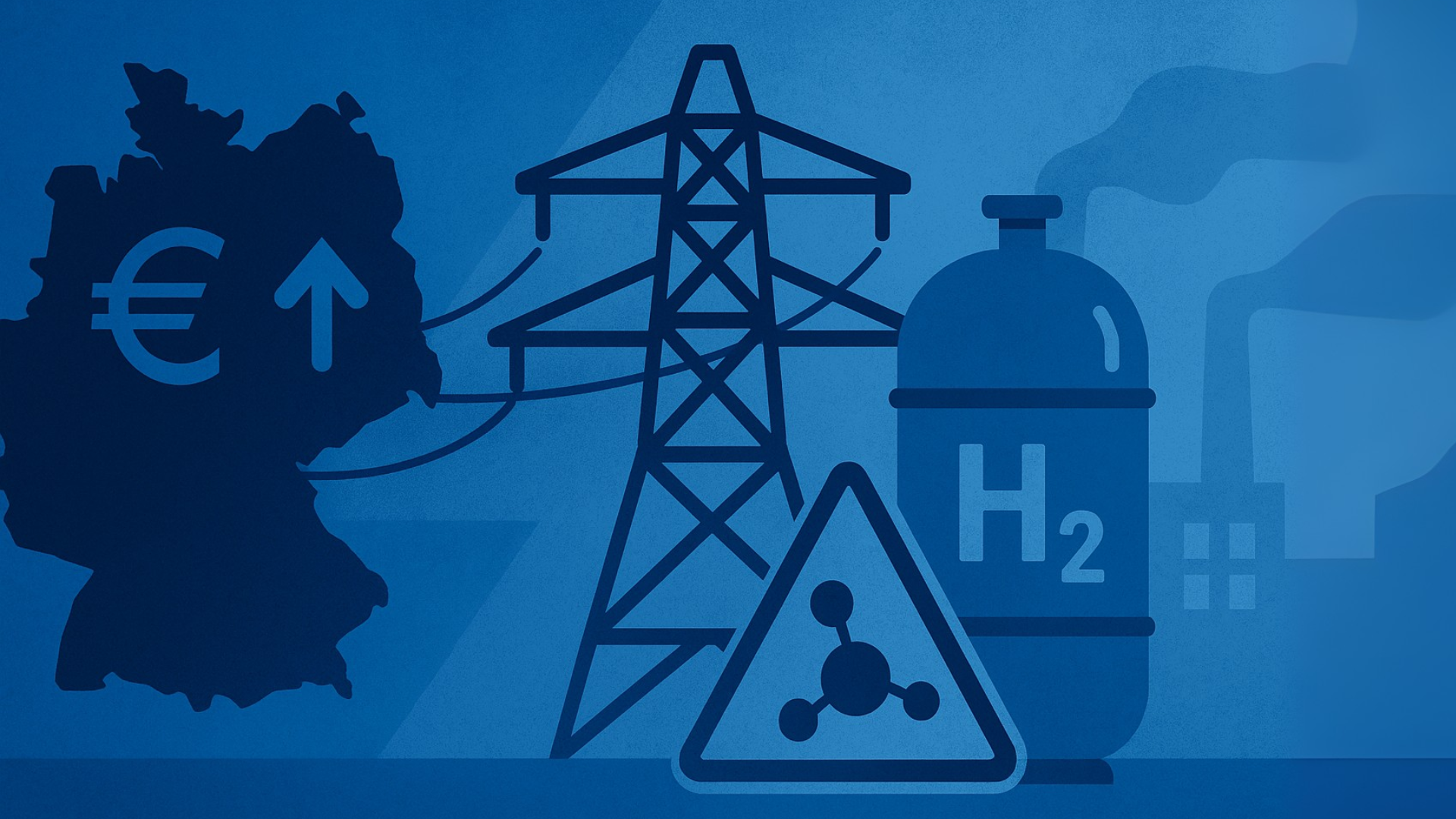Germany’s ambition to become climate-neutral by 2045 is facing mounting challenges, with industry leaders warning that soaring costs and slow adoption of green hydrogen could undermine competitiveness.
According to a study by the German Chambers of Industry and Commerce (DIHK), the country’s current energy transition strategy could cost as much as €5.4 trillion by 2049. That figure includes nearly €2.3 trillion for energy imports and €1.2 trillion for grid expansion, placing a heavy burden on businesses and households alike. DIHK President Peter Adrian cautioned that without a shift towards cost-efficiency, “the energy transition cannot succeed” and risks driving energy-intensive industries abroad.
At the heart of the challenge lies green hydrogen — a fuel that has been positioned as the backbone of decarbonising heavy industry. But executives from major players including Thyssenkrupp, ArcelorMittal, Daimler, and RWE warn that production costs remain prohibitively high. Today, green hydrogen costs around €6 per kilogramme — nearly double the cost of grey hydrogen from natural gas — and could rise to €10 per kilo by 2030 due to regulatory constraints and infrastructure investments.
This cost gap is already reshaping investment decisions. Thyssenkrupp’s CEO Miguel Ángel López Borrego admitted the company may have to rely on fossil fuels for its Duisburg flagship steel plant, while ArcelorMittal recently shelved plans for green steel conversion, even turning down €1.3 billion in subsidies. Daimler, too, has delayed its hydrogen truck rollout amid limited refuelling infrastructure.
The government faces growing pressure to balance climate ambition with economic pragmatism. While Chancellor Friedrich Merz’s administration has pledged to accelerate hydrogen infrastructure — including a planned 9,000 km “hydrogen core network” by 2032 — it has also cut back industrial subsidies, citing budget constraints.
For manufacturers, the uncertainty is creating a dilemma. Should they invest early in costly green hydrogen solutions, or hedge with transitional fuels such as methane and blue hydrogen? Experts warn that inconsistent policies and high energy prices — already among the highest in Europe — risk slowing progress and eroding Germany’s industrial base.
Still, there are reasons for cautious optimism. Over 1.3 GW of new electrolyser capacity is under construction, representing nearly half of Europe’s current pipeline. Some see an opportunity for public procurement to drive early demand, for example by mandating green steel and cement in infrastructure projects.
For industry leaders, the message is clear: Germany’s path to climate neutrality will hinge not only on technological breakthroughs, but also on policy clarity, regulatory flexibility, and cost-competitive energy. Without these, the energy transition could become as much a risk to competitiveness as it is a climate solution.












